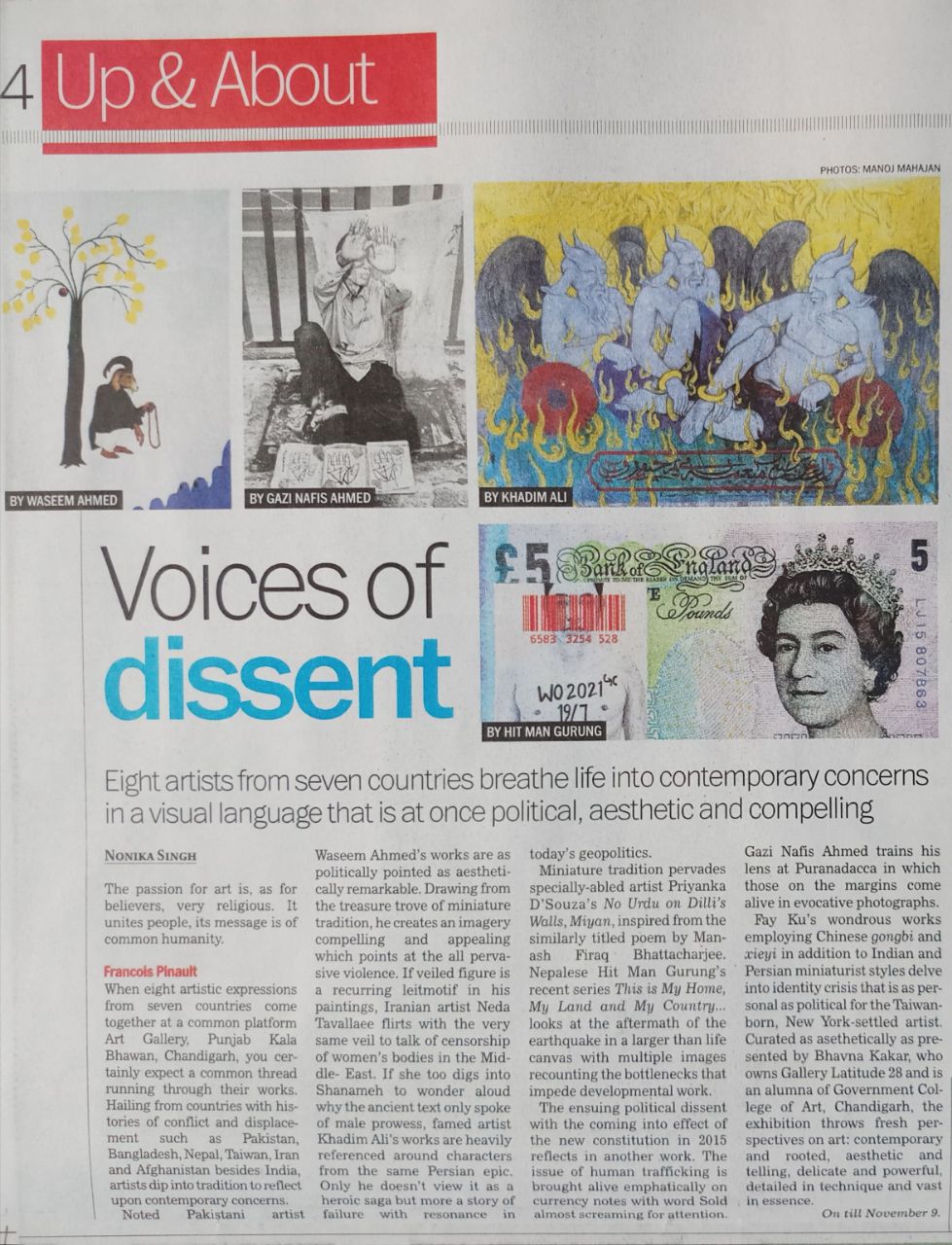by Nonika Singh – The Tribune
Posted at: Oct 27, 2017, 12:36 AM; last updated: Oct 27, 2017, 12:36 AM (IST)
Eight artists from seven countries breathe life into contemporary concerns in a visual language that is at once political, aesthetic and compelling
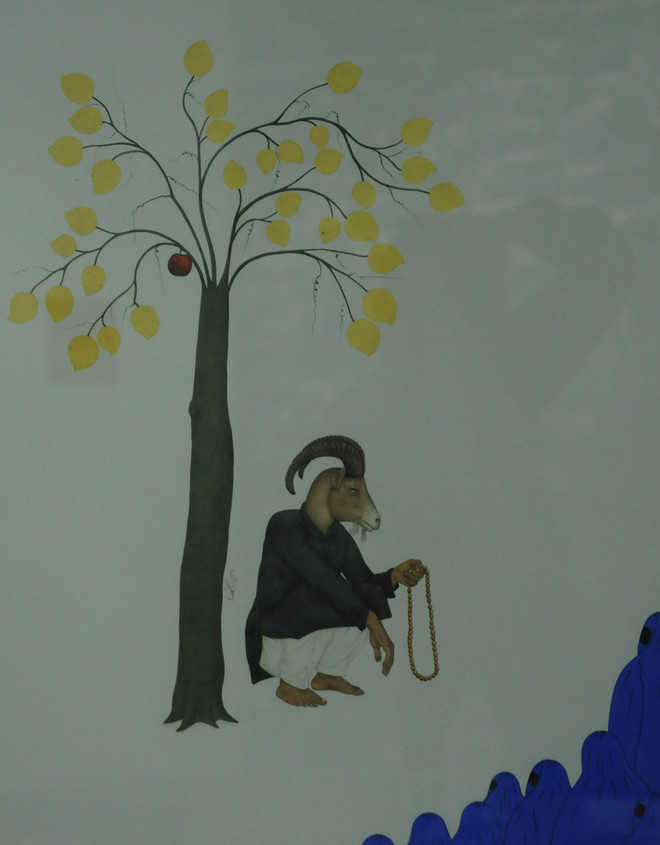
By Waseem Ahmed
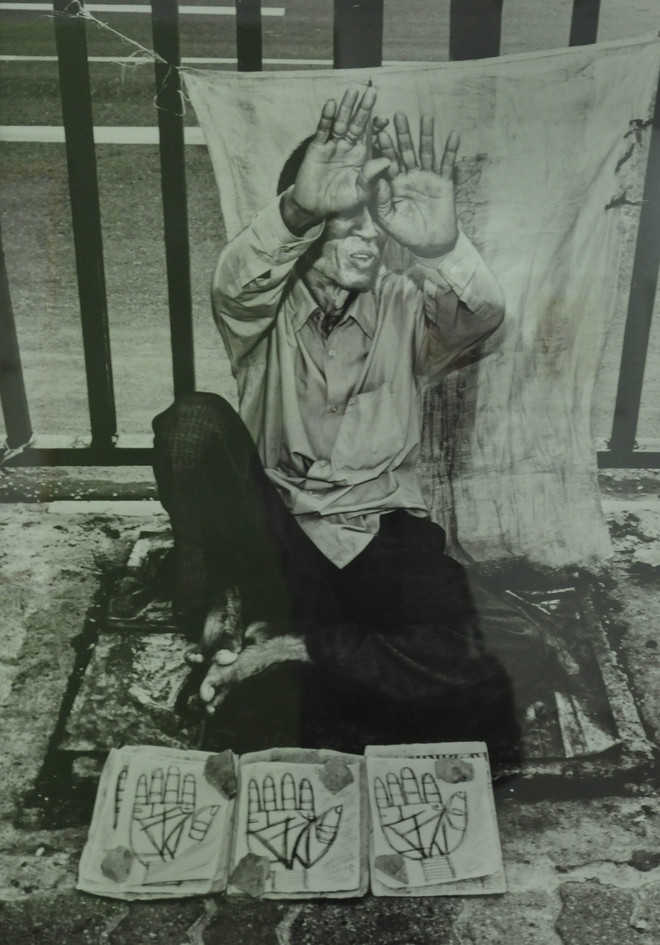

By Gazi Nafis Ahmed
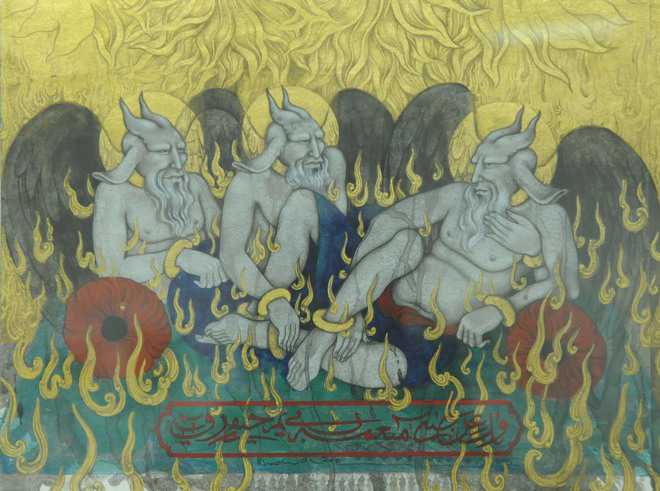

By Khadim Ali
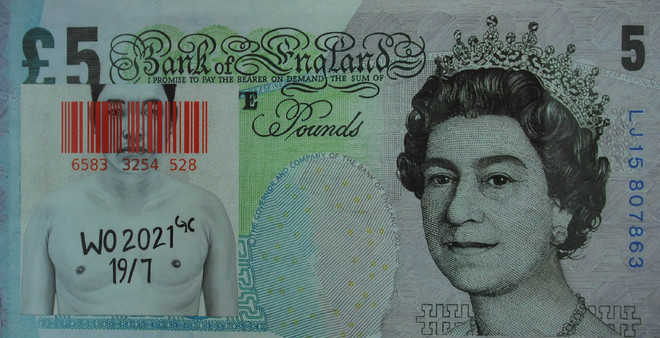 By Hit Man Gurung
By Hit Man Gurung
Nonika Singh
The passion for art is, as for believers, very religious. It unites people, its message is of common humanity.Francois Pinault When eight artistic expressions from seven countries come together at a common platform Art Gallery, Punjab Kala Bhawan, Chandigarh, you certainly expect a common thread running through their works. Hailing from countries with histories of conflict and displacement such as Pakistan, Bangladesh, Nepal, Taiwan, Iran and Afghanistan besides India, artists dip into tradition to reflect upon contemporary concerns. Noted Pakistani artist Waseem Ahmed’s works are as politically pointed as aesthetically remarkable. Drawing from the treasure trove of miniature tradition, he creates an imagery compelling and appealing which points at the all pervasive violence. If veiled figure is a recurring leitmotif in his paintings, Iranian artist Neda Tavallaee flirts with the very same veil to talk of censorship of women’s bodies in the Middle- East. If she too digs into Shanameh to wonder aloud why the ancient text only spoke of male prowess, famed artist Khadim Ali’s works are heavily referenced around characters from the same Persian epic. Only he doesn’t view it as a heroic saga but more a story of failure with resonance in today’s geopolitics. Miniature tradition pervades specially-abled artist Priyanka D’Souza’s No Urdu on Dilli’s Walls, Miyan, inspired from the similarly titled poem by Manash Firaq Bhattacharjee. Nepalese Hit Man Gurung’s recent series This is My Home, My Land and My Country… looks at the aftermath of the earthquake in a larger than life canvas with multiple images recounting the bottlenecks that impede developmental work.The ensuing political dissent with the coming into effect of the new constitution in 2015 reflects in another work. The issue of human trafficking is brought alive emphatically on currency notes with word Sold almost screaming for attention. Gazi Nafis Ahmed trains his lens at Puranadacca in which those on the margins come alive in evocative photographs. Fay Ku’s wondrous works employing Chinese gongbi and xieyi in addition to Indian and Persian miniaturist styles delve into identity crisis that is as personal as political for the Taiwan-born, New York-settled artist. Curated as asethetically as presented by Bhavna Kakar, who owns Gallery Latitude 28 and is an alumna of Government College of Art, Chandigarh, the exhibition throws fresh perspectives on art: contemporary and rooted, aesthetic and telling, delicate and powerful, detailed in technique and vast in essence.
On till November 9.
http://www.tribuneindia.com/news/life-style/voices-of-dissent/487609.html

